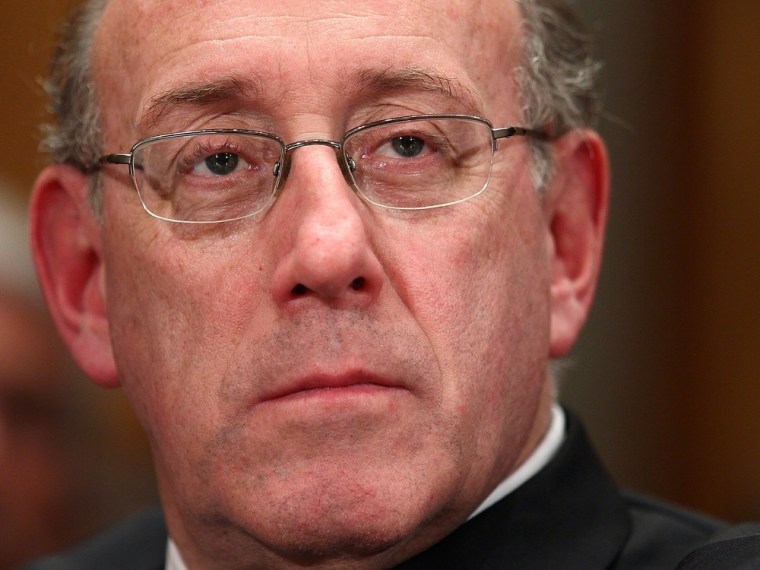Independent paymaster Kenneth Feinberg took the reins from BP in managing damage claims from the Gulf oil spill Monday. He has promised to make sweeping improvements in BP’s system, which has been criticized by applicants as slow, bureaucratic, and lacking in transparency.
This checklist of the fixes that Feinberg has promised describes the changes claimants can expect as Feinberg’s Gulf Coast Claims Facility opens its doors. The investigative newsroom ProPublica will be checking with applicants who are participating in its BP Claims Project to see if these reforms are put in place.
If you’re planning to file a claim with Feinberg, you can fill out a quick online form to speak with a reporter and help monitor the claims process. Applicants with pending claims with BP will have to re-file with Feinberg’s facility in order to get considered.
Here is a checklist of the key improvements that Feinberg has promised:
One adjuster per claim
Under BP, many claimants have described being switched between multiple adjusters as their claim is processed. These switches, they say, have made it difficult to contact the right person to get an update on the status of their claim. Feinberg has promised that each claim will now be handled by a single adjuster throughout the evaluation process. In addition, Feinberg said that he will create an electronic tracking system so applicants can check the status of their claims online.
Reduce response time for valid claims to two days for individuals, seven days for businesses
Feinberg has pledged that for valid, properly documented claims, checks will be sent out within two days to individuals and within a week to businesses. This timetable would mark a drastic acceleration of a BP process that many claimants say has left them waiting for weeks and even months for checks to arrive. "If you file an eligible claim and document it, we guarantee to process personal claims in 48 hours,” Feinberg said at an Aug. 19 meeting with claimants in Houma, La. “If you're a business and you've been waiting for months in a black hole with BP, you will get an answer within seven days."
Eliminate the backlog of unpaid claims
As of Aug. 19, roughly 108,200 claims – or 70 percent of total claims – have not received payments of any kind. Feinberg has criticized BP for leaving too many claims unsettled, and said he would address these claims promptly upon taking control of the process. “There are too many claims sitting there unpaid,” Feinberg said at an Aug. 10 meeting in Panama City, Fla. Later in the same day, he pledged that "people who have been waiting, waiting, we will process those claims immediately."
As ProPublica reported, BP has deferred decisions to Feinberg on thousands of claims whose eligibility is uncertain. These claims are not necessarily valid, and many may be denied by Feinberg. BP data also says that 38 percent of claimants have not sent documentation to support their requests, making it impossible for the company to evaluate the claim.
Ease the requirements for getting claims approved
Feinberg has said that his standards for both eligibility and documentation will be more generous than those applied by BP. BP’s process has been guided by the Oil Pollution Act, a 1990 federal law that holds oil companies liable for direct “removal costs and damages resulting from an incident,” while Feinberg has pledged to go beyond the limits of state and federal law to compensate claims. "I will bend over backwards to find eligibility within reason," Feinberg said on Aug. 10. He has also said that he will require “minimal documentation” for claims for emergency payments that will cover up to six months of lost income.
Documents from Feinberg’s protocol for judging claims indicate that geographic location will be a key factor in determining eligibility. The documents indicate that people and businesses adjacent to an oiled shoreline or waterway will get top priority, and that “geographic proximity, nature of industry, and dependence upon injured natural resources” will be among the factors considered in evaluating claims.
Speed the rate of money going out the door
The single clearest indication of the progress of the claims systems is the rate that money is being sent out. As of Aug. 19, BP had distributed $389 million in payments during roughly three and a half months of handling claims. At the rate that BP has disbursed money, it would spend about $4 billion, or one-fifth of the amount it has set aside, during the 3-year existence of the fund. (The pace of spending is also affected by the fact that the company has been making emergency payments rather than more substantial long-term settlements.)
ProPublica has created a BP Claims Tracker to show how much money is being spent to pay claims. The tracker shows the date that Feinberg assumes control of the process, and will provide a clear visual indication of whether the rate of payments gets faster under his leadership.
